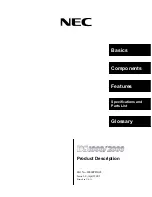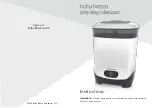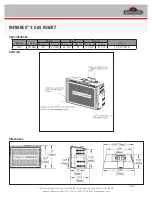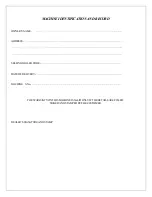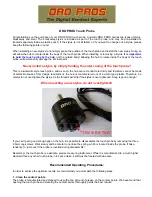
Maintenance
Removal from switchgear
Prior to performing any inspection or
maintenance checks or tests, the circuit
breaker must be removed from the
switchgear. The "Installation checks and
initial functional tests" section (refer to
page 8) describes the removal procedure
in detail. The principal steps are repeated
here for information and guidance, but
without the details of the preceding
section.
1. The first step is to de-energize the
circuit breaker. Figure 36: Trip-control
pushbutton (lower button) illustrates
the location of the trip control on the
circuit-breaker operator panel.
Depressing the trip pushbutton opens
the circuit breaker prior to removal
from the switchgear.
2. The second step in the removal
procedure is to de-energize control
power to the circuit breaker. Open the
control-power disconnect device.
3. Rack the circuit breaker to the
DISCONNECT position.
4. Perform the spring discharge check.
This is done by first depressing the red
trip pushbutton. Second, depress the
black close pushbutton. Third, depress
the red trip pushbutton again, and
observe the spring condition indicator.
It should read DISCHARGED.
5. Remove the circuit breaker from the
switchgear. Refer to page 10 of
"Installation checks and initial
functional tests" section of this
instruction manual for special
instructions and precautions regarding
removal of a circuit breaker not at floor
level.
6. The circuit breaker can be located
either on the floor or on a pallet. Each
circuit breaker has four wheels and
handles to allow one person to
maneuver the unit on a level surface
without assistance.
Checks of the primary power path
The primary power path consists of three
vacuum interrupters and three upper- and
three lower-primary disconnects. These
components are checked for cleanliness
and condition. The vacuum interrupters
are also checked for vacuum integrity.
Some test engineers prefer to perform the
contact-erosion check during the manual-
spring charging check of the operator,
since charging of the springs is necessary
to place the contacts in the CLOSED
position.
Also, the vacuum-integrity check is usually
performed in conjunction with the high-
potential test.
These instructions follow the
recommendation these tests (contact-
erosion/manual-spring charging check and
vacuum integrity/high-potential tests)
should be combined as described.
Cleanliness check
Figure 37: Type 38-3AH3 vacuum circuit
breaker showing vacuum interrupters and
primary disconnects (outer phase barrier
removed) is a side view of the type 38-
3AH3 vacuum circuit breaker with the
outer-insulating barriers removed to show
the vacuum interrupter and the upper- and
lower-primary disconnects.
All of these components must be cleaned
and free of dirt or any foreign objects. Use
a dry lint-free cloth. For stubborn dirt, use
a clean cloth saturated with isopropyl
alcohol (except on a vacuum interrupter).
For stubborn dirt on a vacuum interrupter,
use a cloth and warm water and a small
amount of mild liquid-household detergent
as a cleaning agent. Dry thoroughly using
a dry lint-free cloth.
Figure 36: Trip-control pushbutton
(lower button)
Figure 37: Type 38-3AH3 vacuum
circuit breaker showing vacuum
interrupters and primary
disconnects (outer-phase barrier
removed)
43































